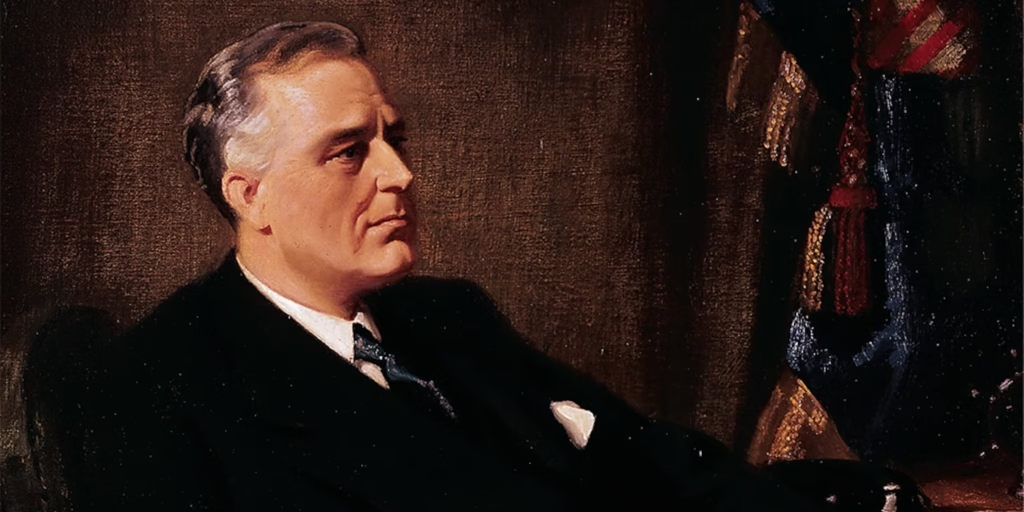Why Did FDR Serve Four Terms? An Ultimate Guide to Presidential Term Limits
It’s pretty common knowledge, isn’t it? A U.S. president can only serve two terms. It’s just, like, a given. But, as many of us might know, there’s this one very notable exception: Franklin Delano Roosevelt. He served four terms, from 1933 to 1945. Which, if you think about it, was when he, well, took the important constitutional decision to die. Given that every president before and after him had only served a maximum of two terms, you might wonder: how did the American people actually react to him doing this? And did anyone even try to stop him? It’s a fascinating bit of history, really, and it tells us a lot about convention, crisis, and how things can just… change.
The Unwritten Rule: Washington’s Precedent
The two-term limit that presidents abided by for so long, it actually originated with George Washington. He, towards the end of his second term, apparently realized that he absolutely hated his job. So, he opted not to run again. Now, he didn’t do this because he believed there *should* be a strict two-term limit, not exactly. Rather, he thought leaders should be willing to hand over power without fuss. It was more about setting a tone, a kind of democratic humility, if you will. Later, when it became clear that John Adams wasn’t going to win a second term, some of Washington’s supporters actually asked him to run for a third. He said no, because he was, quite frankly, too busy being happily retired. Many people, I think, saw this as Washington condemning third terms, almost like a moral decree. But really, it was just a convention, an unwritten rule, not a law. It was a powerful tradition, though, one that held sway for a very long time.
- The two-term limit began as a tradition set by George Washington.
- Washington declined a third term not due to a belief in a strict limit, but to demonstrate willingness to hand over power peacefully.
- His decision was a convention, not a legal mandate.
Testing the Waters: Early Attempts at a Third Term
So, did any other presidents try to run for a third term? Oh, yes, quite a few of them, actually. The first president to openly flirt with breaking this convention was Ulysses S. Grant. However, his party, perhaps sensing the public mood or just being pragmatic, refused to nominate him for a third go. Then, Grover Cleveland was offered a third run in 1896 by his party. But he was, it seems, well aware that everybody pretty much hated him at that point, so he wisely declined. It makes you wonder, doesn’t it, about the political calculations involved?
The first president with any genuine hope of being re-elected to a third term was none other than Theodore Roosevelt. He was initially offered a third term by his party but, respecting Washington’s precedent, he refused. However, when he realized his successor, William Taft, well, “sucked” might be a strong word, but let’s just say he was deeply dissatisfied, Roosevelt tried to win the Republican nomination again. But they stuck with Taft. So, Roosevelt, being Roosevelt, formed a new party, the Bull Moose Party. He ran against Taft, effectively splitting the Republican vote, and managed a respectable second place to Woodrow Wilson. Wilson himself had hoped for a third term, but his party, again, refused to nominate him. This meant that, right up until FDR, the convention, that unwritten rule, stayed intact. It had been challenged, certainly, but never broken. It’s a testament, perhaps, to the power of tradition in American politics.
Presidents Who Sought or Were Offered a Third Term (Pre-FDR)
| President | Attempt/Offer Year | Outcome | Reason for Outcome |
|---|---|---|---|
| George Washington | 1796 | Declined | Believed in peaceful transfer of power, desired retirement. |
| Ulysses S. Grant | 1880 | Party refused nomination | Party did not support a third term. |
| Grover Cleveland | 1896 | Declined | Aware of his unpopularity. |
| Theodore Roosevelt | 1912 | Ran as third party, came second | Initially refused, then ran due to dissatisfaction with successor; split vote. |
| Woodrow Wilson | 1920 | Party refused nomination | Party did not support a third term. |
- Ulysses S. Grant was the first to openly consider a third term, but his party refused to nominate him.
- Grover Cleveland declined a third run due to unpopularity.
- Theodore Roosevelt initially respected the tradition but later ran as a third party (Bull Moose Party) after his successor disappointed him, splitting the vote.
- Woodrow Wilson also sought a third term but was not nominated by his party.
- The two-term convention remained unbroken until FDR.
FDR’s Unprecedented Run: A Wartime Exception
So, what exactly changed with Roosevelt? Well, with World War II raging in Europe, FDR believed that his opponent, Wendell Willkie, would, perhaps, leave Britain to its fate. He also worried Willkie might undo his New Deal policies. What made this time different, the crucial shift, was that his party actually agreed. This wasn’t just a president wanting to run; his party, the Democratic Party, was on board. Now, as you can guess, a third run was quite contentious. The Republican Party, naturally, accused Roosevelt of being a dictator and claimed that seeking a third term was “Un-American.” It was a pretty heated debate, I imagine, a real political firestorm.
Broadly though, most Americans were, I think, much more concerned with navigating through the tumultuous times. The world was literally at war, and the economy was still recovering from the Great Depression. Ultimately, Roosevelt was seen as more trustworthy in economic and foreign policy matters than Willkie. This, I believe, is why he won the 1940 election handily. He then ran for, and won, a fourth term, which shocked precisely zero people by that point. The country was deep into the war, and continuity in leadership felt, to many, essential. But he died shortly afterwards, in April 1945, just as the war was nearing its end. It was a dramatic close to an unprecedented presidency.
- FDR sought a third term due to World War II in Europe and concerns about his opponent’s policies.
- His party supported his third run, unlike previous attempts by other presidents.
- The Republican Party criticized his third term as “dictatorial” and “Un-American.”
- Americans were more concerned with the ongoing crisis (WWII, Great Depression) and trusted Roosevelt’s leadership.
- He won the 1940 election and subsequently a fourth term in 1944.
- He died shortly after beginning his fourth term in April 1945.
The Aftermath: The 22nd Amendment
By 1947, just a couple of years after FDR’s passing, there were many politicians in both parties who were concerned that long-running presidents could, perhaps, lead to “National stagnancy.” It’s an interesting thought, isn’t it? That too much continuity might actually be a bad thing for a democracy. This political concern, this worry about concentrating too much power for too long, is what prompted the 22nd Amendment to be put forward. This amendment, once ratified, banned presidents from serving for more than two terms. It was a direct response, I think we can safely say, to FDR’s four terms, solidifying Washington’s unwritten rule into constitutional law. It just shows how a single, extraordinary presidency can reshape the very framework of government.
The 22nd Amendment had one exception: Harry Truman. This was because he was already president when the amendment was proposed and ratified, so he was allowed to run again if he wanted. He tried, but his unpopularity soon made it clear that his party would have, well, preferred to elect literally anybody else. And so, he stood down, thereby ending the last attempt at there ever being a three-term president. It’s a neat, tidy end to a very long and, at times, uncertain tradition. The amendment, it seems, put a definitive stop to any future presidential dynasties, ensuring that the highest office in the land would always, eventually, change hands.
- Concerns about “National stagnancy” due to long presidencies led to the 22nd Amendment.
- The 22nd Amendment officially banned presidents from serving more than two terms.
- Harry Truman was an exception, allowed to run again as he was president when the amendment was ratified.
- Truman chose not to run due to his unpopularity, solidifying the two-term limit for all future presidents.
Understanding Presidential Term Limits: A Historical Look
The notion of a two-term presidency, a cornerstone of American political tradition, began as an informal precedent set by George Washington, driven by his belief in the peaceful transfer of power. For over a century, this unwritten rule held, despite several attempts by ambitious presidents like Ulysses S. Grant and Theodore Roosevelt to secure a third term. It was the extraordinary circumstances of World War II that allowed Franklin Delano Roosevelt to break this tradition, serving an unprecedented four terms, with his party’s support and a nation’s trust during a time of immense crisis. However, FDR’s extended tenure sparked concerns about potential “National stagnancy” and the concentration of power, leading directly to the ratification of the 22nd Amendment. This amendment formally enshrined the two-term limit into law, with Harry Truman being the sole exception due to his incumbency. Ultimately, the 22nd Amendment ensured that no future president could replicate FDR’s lengthy stay in office, cementing a legal framework around a long-standing, but once flexible, political custom.
Key Takeaways
- Washington’s Precedent: The two-term limit started as an informal tradition by George Washington, emphasizing democratic transfer of power.
- Challenges to the Convention: Several presidents before FDR, including Grant, Cleveland, and Theodore Roosevelt, attempted or were offered third terms, but none succeeded in breaking the tradition.
- FDR’s Exception: Franklin D. Roosevelt’s four terms were unique, driven by the national and global crises of the Great Depression and World War II, and supported by his party.
- The 22nd Amendment: Post-FDR, concerns about presidential power led to the 22nd Amendment (1947), legally limiting presidents to two terms.
- Truman’s Role: Harry Truman was the only president exempt from the 22nd Amendment’s immediate effect, but he ultimately chose not to run for a full third term.
- Constitutional Shift: What was once a strong political convention became a binding constitutional law, fundamentally changing the landscape of the American presidency.

